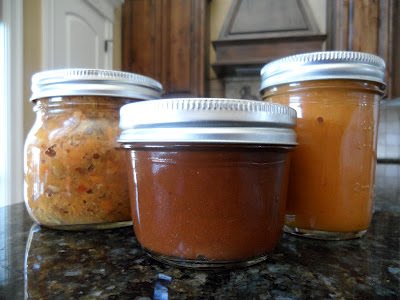 |
| Beautiful Daikon Radish Greens |
Today we will look at some of the many health benefits of my favorite adopted food culture.
Rather than focus on recent Japanese food trends such as an ever-increasing appetite for imported western-style food or the super artificial "kawaii" cutsy/adorable (aka Hello Kitty) bento box convenience meals that are so popular with the young, we will take a look at traditional Japanese food culture and see what it brings to the table.
EAT SEASONALLY
Japanese food is all about perfection and seasonal timing. The traditional Japanese diet does not only favor seasonal food, it CELEBRATES seasonal food!
While it is true that seasonal eating will require that we periodically "suffer" through times of scarcity when a particular food is not abundantly available or in season, please bear in mind that when the food IS in season that it will taste SO MUCH BETTER. Think of styrofoam-out-of-season pink tomatoes. Is anybody tempted? The big pay off with eating seasonal food, not food imported from half way around the world, is that you can fully enjoy the food at its most exquisite moment of perfection.
LOCAL FLAVOR
Traditional Japanese food is authentic honest food that derives its character from its native land and sea. Japan is an island nation and the essence of traditional Japanese food is the delicate balance of flavor - the distinct briny flavor of the sea married to the earthy flavor of the land. The marriage of land and sea (did you see the film documentary "Jiro Dreams Of Sushi?') is the magical essence of traditional Japanese food culture.
One of the most powerful and provocative things we can do on a daily basis, no matter where we live, is to eat food that is locally produced as often as we can.
Local food is fresher, more nutritious, and tastes better. Local foods are authentic foods that strengthen health and connect us to our place in the world in an intimate and authentic way.
Rather than imitating the Japanese genius for food flavor, unless, of coarse, you happen to live in Japan, what would be an authentic expression of your food culture?
BEAUTIFUL FOOD
Traditional Japanese food is beautiful to look at.
When we make food look beautiful and appealing to the eye, even taking into consideration the beauty of negative space on the plate, food is infinitely more satisfying. We can eat slowly and savor the flavor and texture of the food. When food is beautifully and artfully prepared we literally eat the food with our eyes before we take the first bite.
LESS IS MORE
From the land of the rising lifespan, the Japanese being the longest lived people on the planet, comes this old Japanese saying, "hara hachi bu," which roughly translates to "eat until you are 80% full."
Coming from a society that glorifies the "all you can eat" mentality this may seem counter-intuitive at first, but, as we train ourselves to be satisfied with less food we will reap health benefits, if only in increased energy and improved digestion!
WHAT DO THE JAPANESE EAT?
FISH AND SEAFOOD - Most people think that the Japanese diet is primarily a vegetarian rice diet, but, fish and shellfish, rich in omega-3 fatty acids, are actually the staple food of Japan. The average person in Japan consumes roughly 154 pounds of fish a year. That is about one-half pound per day.
VEGETABLES - The Japanese consume about five times more green and cruciferous vegetables, such as kale, cabbage, broccoli, Brussels sprouts, watercress, Chinese cabbage, radish, cauliflower, and turnips, than the average American.
SEA VEGETABLES - Kombu, nori, arame, hijiki, and wakame are plentiful in Japan. Sea vegetables are an important part of Japanese cuisine and contain high amounts of iodine, which helps protect thyroid health, as well as other minerals and important micro-nutrients.
PICKLED VEGETABLES - No wonder I love Japanese food! Fermented vegetables are served with every traditional Japanese meal! Pickled vegetables, which are high in B-vitamins, are usually eaten at the end of a meal to aid digestion. Daikon radish pickled in rice bran is one of my favorite Japanese pickles.
RICE - Rice, short grain rice being most highly favored, is the staple grain of Japan. Interestingly, rice is relatively low in phytic acid, compared to other gluten-containing grains, and according to Sally Fallon, rice does not require the overnight soaking and special preparation methods that other grains require.




















